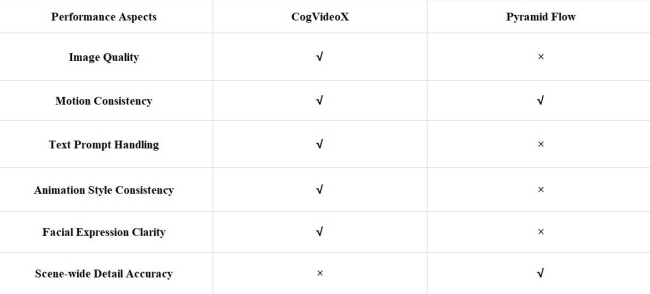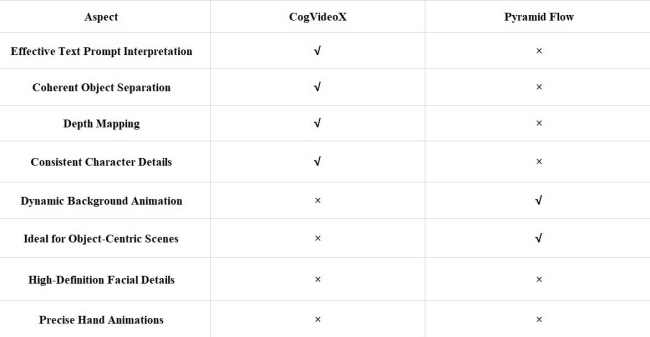
CogVideoX vs. Pyramid Flow: Which is the Best AI Video Model for Local Generation?
AI tools are pushing creative boundaries, offering creators unprecedented ways to craft dynamic, lifelike videos. CogVideoX stands out for its accuracy in capturing subtle motions and expressions, making it ideal for character-driven animations. Pyramid Flow, on the other hand, excels at generating dynamic backgrounds, delivering smooth, nature-inspired animations that suit scenic settings. Tested on the same platform, ComfyUI, this guide compares the strengths, limitations, and best use cases for each model, helping you find the right tool for your AI video projects.

Overview of CogVideoX and Pyramid Flow
Before diving into performance comparisons, here's a quick overview of how each model functions on the ComfyUI platform.
CogVideoX's 5B version, chosen for this comparison, supports image-to-video generation with precise depth mapping and subtle motion capabilities. This version ensures higher complexity and accuracy, which makes it well-suited for structured animations and controlled movements.
- Pyramid Flow
Pyramid Flow uses a diffusion Transformer model to generate high-resolution videos, handling both image-to-video and text-to-video conversion. Its strength lies in maintaining consistency in backgrounds and natural elements, offering a smooth, cohesive animation experience for nature-based or scenic videos.
Key Performance Comparison
In this comparison, we explore how CogVideoX and Pyramid Flow perform across essential aspects of video generation. The table below highlights each model's strengths in specific performance areas. But it must be said that "×" does not mean it's terrible in that aspect. It only means it is not as same good as the other one.
This table highlights some key performance of CogVideoX and Pyramid Flow. CogVideoX excels in accurate text prompt handling, consistent character details, and nuanced animation styles, making it ideal for character-driven scenes. Pyramid Flow, meanwhile, performs best in scenic animations, maintaining strong background consistency and detail, making it suitable for object-centric and landscape-focused videos.
Common Use Cases Test
When creating videos, we will encounter some common and easy scenarios. So how do these two tools perform when encountering these common scenarios?
- Product Demonstrations and Object Animations
Product animations, like a hand reaching for a bottle, highlight differences between the models. CogVideoX handled this test well, accurately animating the hand movement, although label text appeared slightly blurred. Pyramid Flow struggled to create natural hand motions, resulting in less fluid object interactions.
- Fantasy and Stylized Animations
For creative scenes, like a character surrounded by floating orbs, CogVideoX delivered a cohesive animation with smooth character movements. Pyramid Flow, while capable of generating stylized backgrounds, sometimes produced inconsistent head and eye movements that affected overall quality.

Also Read: Genmo AI Mochi 1: A Powerful Model for Video Generation
Summary of Strengths and Weaknesses
Here's a quick recap of the strengths and weaknesses of each model, providing a snapshot to help guide your choice.
This summary table outlines each model's core strengths, with CogVideoX performing well in text-based prompts and detailed character animations, while Pyramid Flow's strength lies in dynamic backgrounds and scenic settings. Both models share challenges with precise hand and facial detail, best suited for broader animations over highly detailed close-ups.
Conclusion
When deciding between CogVideoX and Pyramid Flow, consider your project's focus. CogVideoX is ideal for character-driven animations that need accurate motion interpretation, while Pyramid Flow shines in scenic, nature-inspired settings with cohesive background movement. Testing each model on ComfyUI allows you to explore their unique strengths, ultimately helping you find the perfect fit for your AI-driven animation needs.




